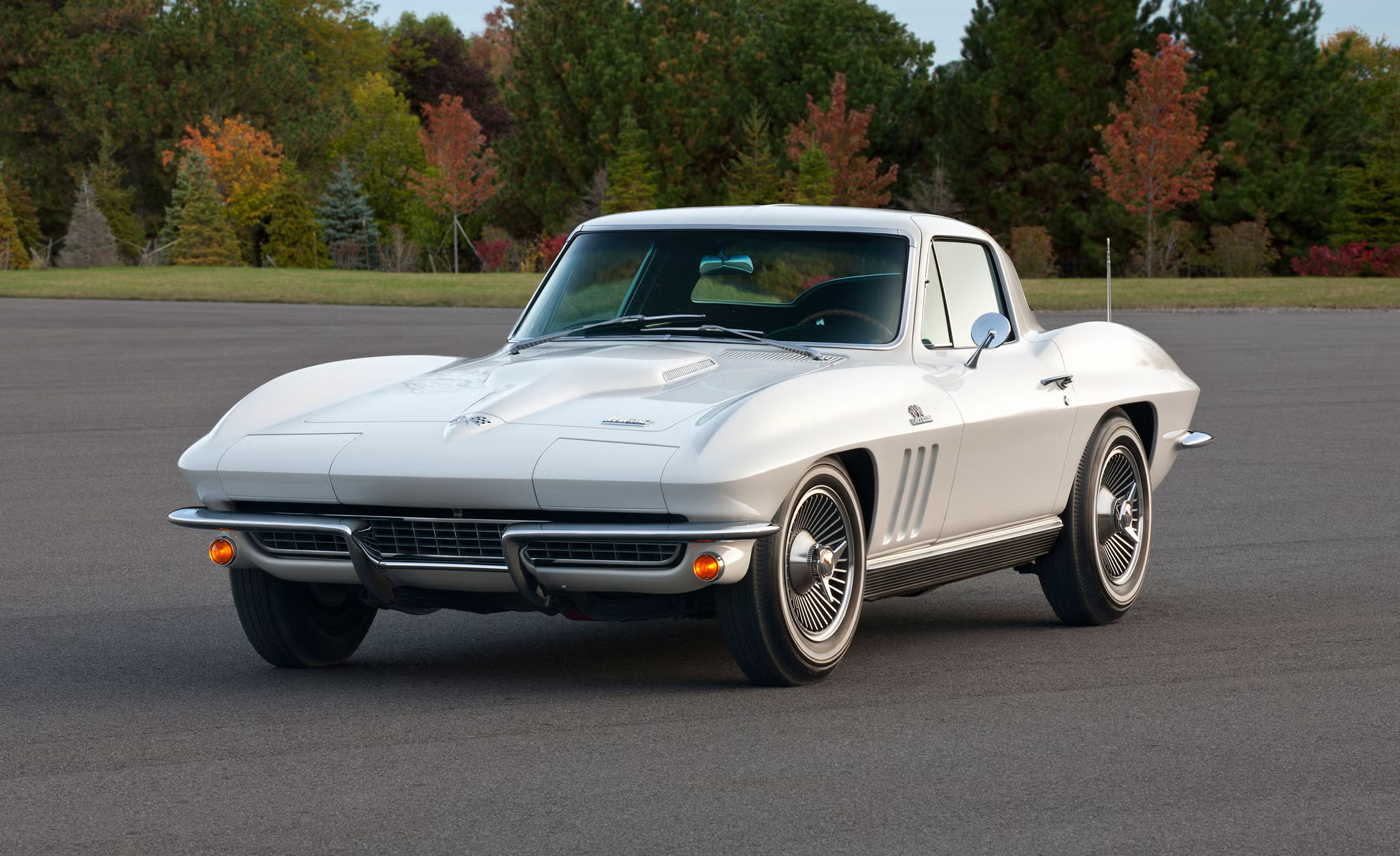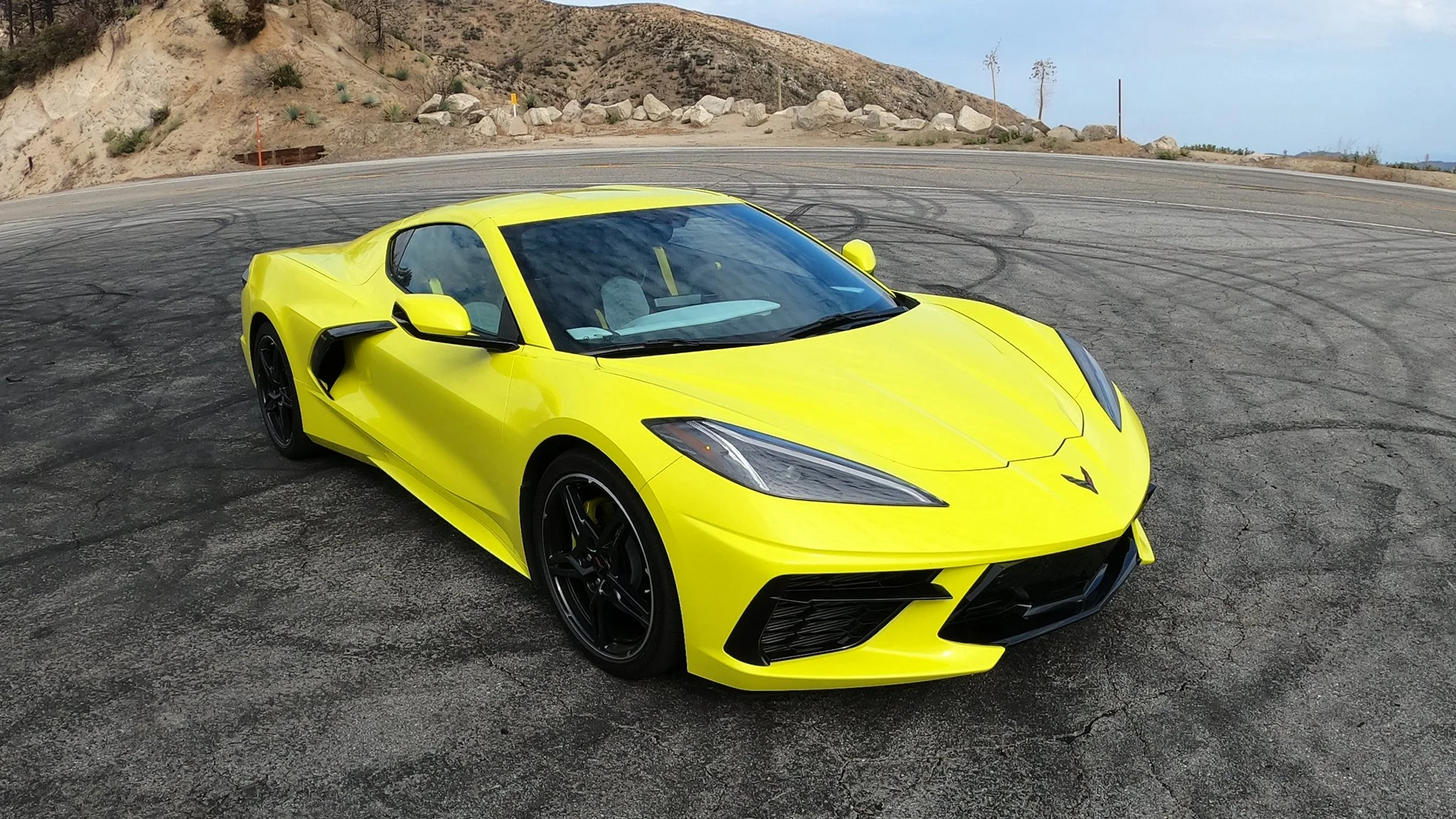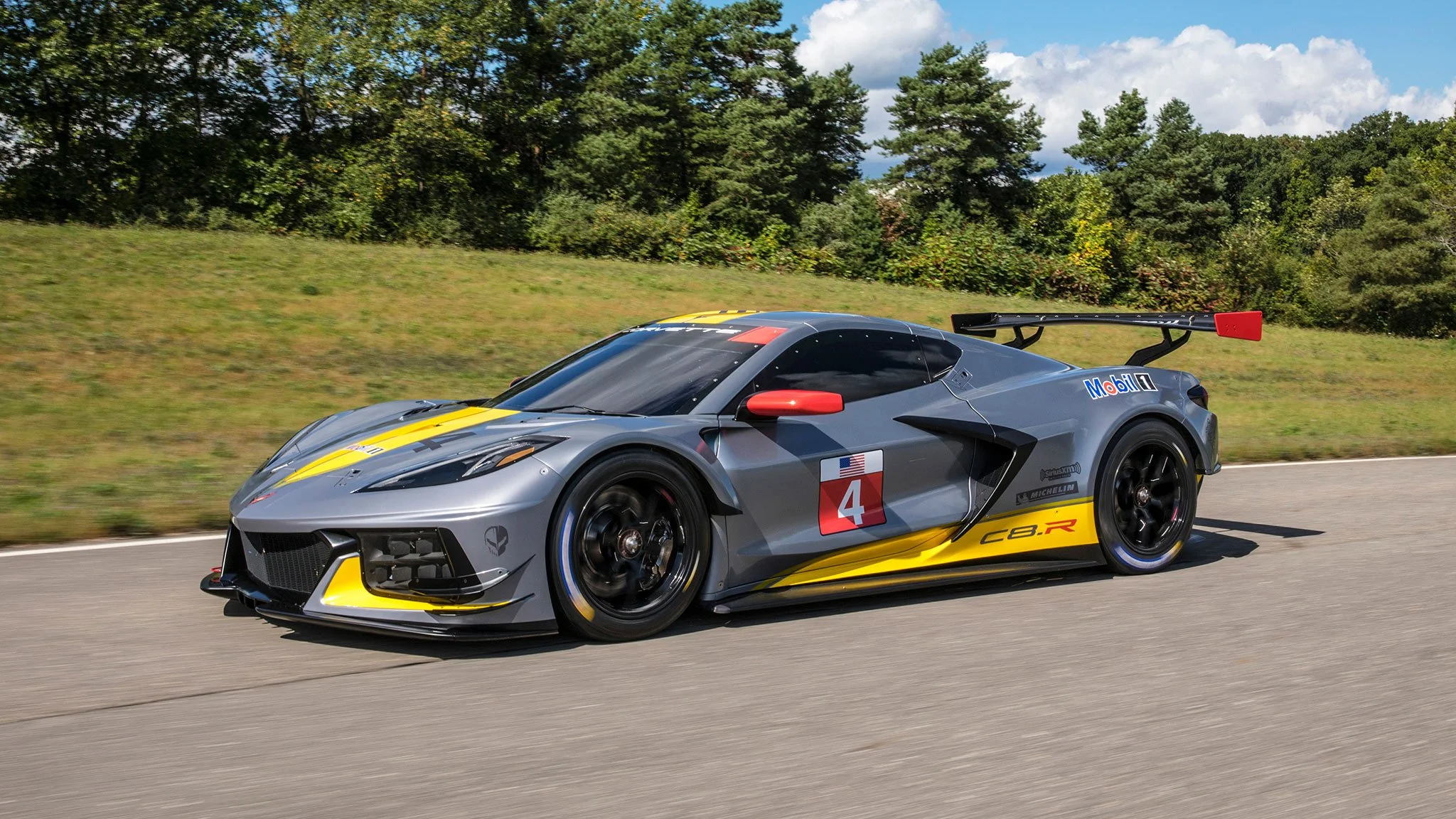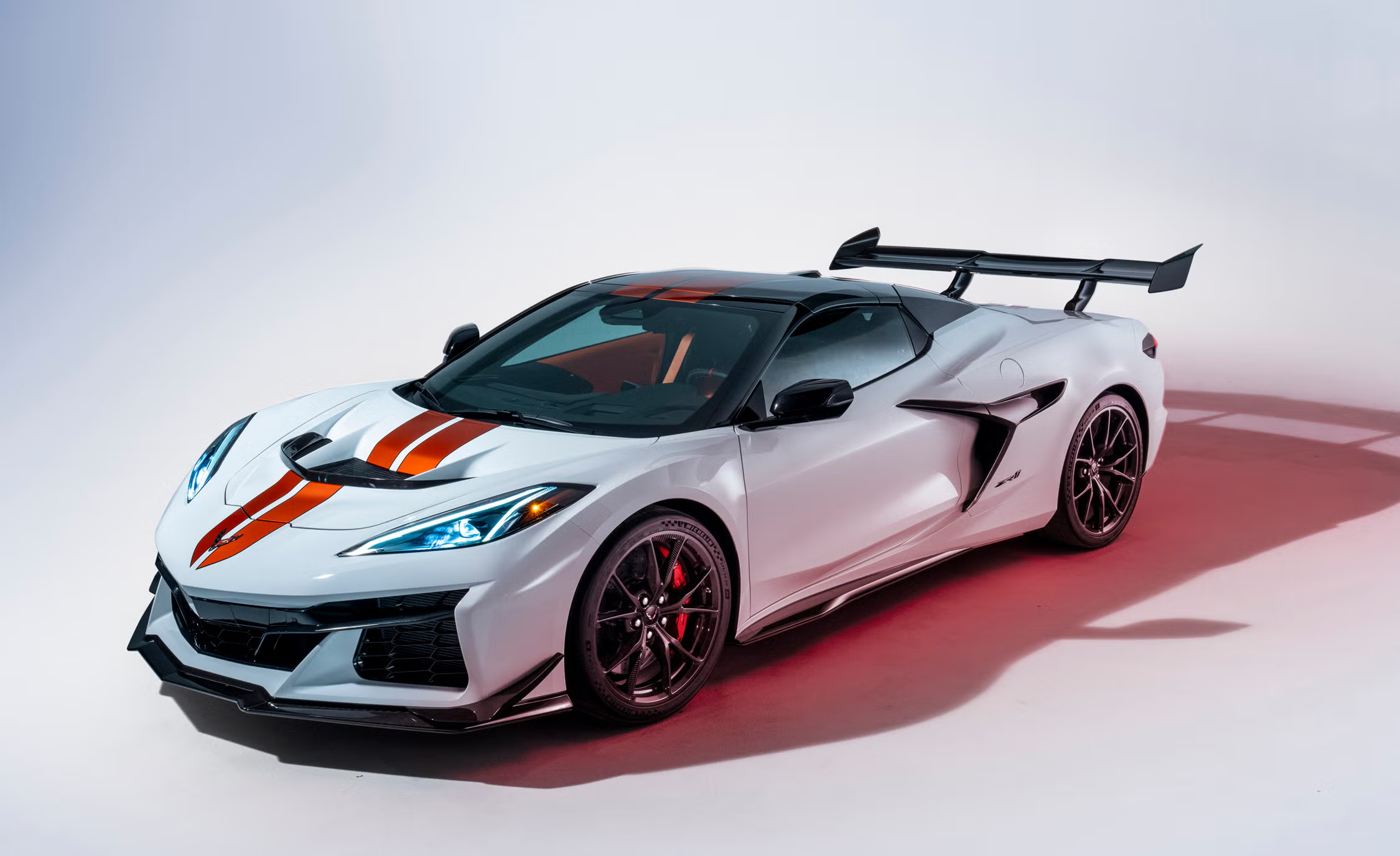Corvette – America's Sports Car, From Fiberglass Dreams to GT Glory
The Birth: C1 (1953–1962) – Fiberglass and Founding Ideals
The Corvette story began in 1953 with the C1 — a bold experiment in fiberglass, introduced as a concept at GM’s Motorama. With just 300 hand-built units in Polo White and red interiors, the C1 was stylish but underpowered at first, relying on a 150-hp inline-six and a two-speed Powerglide automatic.
Everything changed in 1955 with the introduction of the small-block V8. This was the beginning of Chevrolet’s performance ambitions. The 1962 model, with its 327 cu in V8, set the stage for the Corvette’s transformation into a true sports car.
1955 Corvette Convertible
Image credit: Car & Driver
C2 (1963–1967) – The Sting Ray Strikes
The second generation brought a bold new look and sharper performance. The split-window 1963 Sting Ray coupe remains one of the most coveted Corvettes ever made. The new chassis, independent rear suspension, and optional fuel injection elevated the Corvette from boulevard cruiser to sports car contender.
1966 Corvette Hardtop Stingray
Image Credit: Chevrolet
C3 (1968–1982) – The Mako Shark Era
Heavily influenced by the Mako Shark II concept, the C3’s long, sweeping lines made it a pop culture icon. Early models packed serious power, including the 427 cu in beasts, but emissions and safety regulations in the '70s softened performance. Still, the Corvette survived the malaise era.
1969 Corvette Stringray, second of its name.
1968 Corvette Fastback
1978 Indy 500 Pace Car Replica: Introduced Corvette’s modern-day tradition of commemorative editions.
Additional Special Editions:
1969 ZL1: A rare, all-aluminum 427 V8 unicorn.
1982 Collector’s Edition: Celebrated the end of the C3 with a hatchback rear window and unique graphics.
C4 (1984–1996) – Digital Dashboards and Road Racing Roots
The C4 ushered in a modernized, more aerodynamic Corvette. Though initial models faced criticism for ride quality, Chevy quickly responded with better suspension and powertrains. The highlight: the ZR-1 (1990–1995), nicknamed the “King of the Hill,” featuring a Lotus-designed, DOHC LT5 V8 with 375 hp (and later, 405 hp). It stunned Europe by beating Ferrari and Porsche on their own turf.
Racing Renaissance: The C4 reignited Chevrolet’s motorsport efforts, with Corvette Challenge one-make series and increased GT racing presence.
In 1996, the Grand Sport model was introduced with a more powerful LT4 engine and 6-speed transmission for motorsports enthusiasts to enjoy.
1989 Chevrolet Corvette Convertible
C5 (1997–2004) – Precision Engineering and the Racing Return
With the C5, Corvette became more than muscle — it became refined. Built on an all-new hydroformed chassis and powered by the all-aluminum LS1 V8, it offered improved rigidity and balance.
Game-Changer: The C5-R, developed by Pratt & Miller, conquered endurance racing with wins at Daytona, Sebring, and Le Mans. Drivers like Ron Fellows, Johnny O’Connell, and Kelly Collins became household names for Corvette Racing fans.
1996 Corvette Grand Sport
2001 Corvette Z06: the Lightweight and track-focused variant
C6 (2005–2013) – The ZR1 was a Supercharged Showstopper
Sharper, leaner, and more powerful, the C6 featured exposed headlights for the first time since 1962. The return including second of it’s kind the Z06 with a 505-hp 7.0L LS7 engine turned heads, while the ZR1 (2009) redefined performance: 638 hp, carbon fiber panels, and a supercharged LS9 V8 made it the fastest Corvette ever at the time.
Racing Glory: The C6.R continued Corvette Racing’s dominance in the GT1 and later GT2 classes, battling fierce rivals like Ferrari, Aston Martin, and Porsche.
2005 Corvette Hardtop
2010 Corvette Grand Sport with rolled fenders and hood scoop
C7 (2014–2019) – The Stingray Returns
Bringing back the Stingray name, the C7 combined classic styling cues with cutting-edge tech. An optional Z51 package sharpened handling, while magnetic ride control and launch control brought modernity to muscle.
Racing: The C7.R, with its distinctive yellow livery, scored wins at Sebring and Le Mans, with drivers like Jan Magnussen, Antonio García, and Oliver Gavin adding to the legend.
2014 Corvette Stingray, third of its name
2017 Corvette Grand Sport
2016 Corvette Z06, another supercharged showstopper
C8 (2020–Present) – Introduction of the Mid-Engine for Corvette
A seismic shift: the 2020 C8 Corvette debuted as the first mid-engine production model, repositioning Corvette as a true exotic — at an astonishing value.
2021 Corvette Stingray, fourth of its name.
Photo Credit: Hot Rod Magazine
Stingray (2020+): 6.2L 495 hp, 0–60 in 2.9 seconds.
Z06 (2023+): 6.2L 670-hp flat-plane-crank V8 with a supercharger.
E-Ray (2024+): The first hybrid AWD Corvette, blending performance with electrification.
ZR1 (2025+): 5.5L 1064-hp V8 — the highest-horsepower turbocharged V8 in corvette production history.
The latest edition of the GT Series Competition vehicle continuously developed by Pratt & Miller, now competing in the GTD Pro class.
The C8.R upholds the Chevrolet badge’s racing reputation, facing fierce competition from BMW M, Ferrari, and Porsche.
Chevrolet Corvette Racing C8.R by Pratt & Miller
Photo Credit: Hot Rod Magazine
2019 Corvette ZR1
Cheers.
John Pierce
Editor
References: Johnson, Hot Rod Magazine, https://www.hotrod.com/articles/2020-chevrolet-corvette-c8-r-race-car-revealed-convertible-eventFink, Car & Driver, https://www.caranddriver.com/features/g22035705/fully-vetted-the-visual-history-of-the-chevrolet-corvette/

















